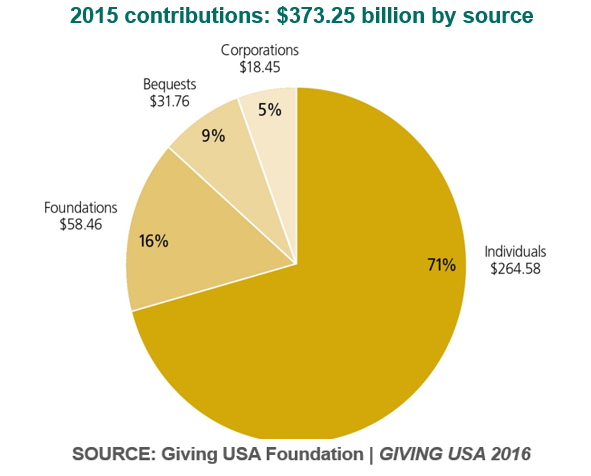By Brenda B. Asare, President & CEO, The Alford Group
In today’s information age, we are generating more data than we know what to do with. “Big Data” is only getting bigger. The private sector is swimming in data and hiring data analysts, data scientists, data architects and the list goes on. But what about the nonprofit sector?
Data is just as important to nonprofits as it is for corporations. Every organization’s success today is dependent upon data-driven strategies. Nonprofits are using data to drive results, create impact, and tackle some of the world’s most critical social and economic problems.
However, with limited resources, nonprofits aren’t hiring data scientists by the dozen. So, how do you keep up? Well, the first place to start is by having a data-driven fundraising program. This will allow you to be more effective and efficient at raising money. This means you will be spending less time and fewer resources on fundraising.
Mary Hackett is the associate vice president of data analytics with our firm and suggests starting with three specific areas of donor data analysis.
1. OVERALL DATA HEALTH
Your database is one of the best tools in your toolbox. Your fundraising database should be the first place you look when searching for prospects, beginning a strategic plan, or looking for a constituent’s email address. The data that is in that database is going to feed any and all analytics and reporting. So, it needs to be a healthy and robust system.
When diagnosing databases, we look at four large categories of integrity: Overall Data Health, Gift Entry & Pledge Management, Constituent Management & Tracking, and Database Utilization. We’ve identified best practices for dozens of subcategories within these four groups, but here are some biggies to get you started in testing the overall health of your database.
Make sure that:
- Less than 3% of all records are duplicative.
- Pledge payment schedules are recorded and pledge reminders are sent.
- 100% of prospects in the moves management continuum are coded to a solicitor.
- Less than 8% of your constituency have invalid mailing addresses.
- Fundraisers have access to the data/reports they need.
2. RETENTION RATE
This is a great overall data health check because every donor counts. No matter how much someone gives, your $1 donor is going to have the same “weight” as your $1 million donor. Sometimes large gifts can skew reporting and that’s the great thing about retention – everyone counts. Your retention rate speaks to many facets of your overall organization and it really does take a village to have a healthy fundraising program.
Different sources report different national averages but all range between 43%-46%. When you calculate your retention rate and it is below or at the national average, there’s work to be done. Here are some of our favorite ways to steward donors, and stewardship is the name of the game!
- Make sure your acknowledgements go out within 5-7 days of gift receipt. Look at the language in the letter. If this is one of the only mail pieces your donors will receive, is it the most impactful language? Have you promoted upcoming events where the donor might make a second gift? Have you included a compelling story that the donor will remember and might tell a friend? Have you offered a tour of your facility? Is the letter personalized as much as possible?
- When you get to work in the morning, get your coffee and sit at your desk. The first thing you should do every morning is pick three recent donors and call them to thank them for their gift. I promise it will be one of the most rewarding things you do all day, and those donors will remember the call (or the voice-mail) when you solicit them for a second gift. If you call three or four people every day, you will make close to 1,000 calls over the year. Your retention rate is sure to increase.
- Create cultivation and stewardship experiences for your donors that get them on site (regularly). This should not be a solicitation, rather a time to connect your donors to the mission. Each month or quarter, you could mix it up by having different presentations by program experts or C-level executives.
3. A DIVERSE REVENUE MIX
Diversity is key to healthy fundraising. It is important that revenue comes from multiple sources. Every year the Giving USA Foundation releases the Annual Report of Philanthropy. It is the longest running annual report about U.S. charitable giving and is the most comprehensive source of Big Data around donor behavior.

You can see that individuals bring in the bulk of the revenue. It’s not important that your organization match this pie; in fact, your pie might look very different based on your organization type. However, it’s important that your organization has diverse pie pieces that mirror your organizational objectives. Take a good look at your sources of funding. This information will be helpful in multiple ways:
- It shows you where you have risk.
- It will help you assess if your staffing structure matches your revenue mix.
- It helps in the budgeting process.
As we continue into the information age and the importance of data escalates, having a healthy donor database will become more and more crucial. Start with these three areas of analysis and experience the benefits of a data-driven fundraising program.
For more information, check out the full recording and slide deck from The Alford Group’s recent webinar titled How Healthy is Your Fundraising Program? 5 Temperature Checks to Find Out.